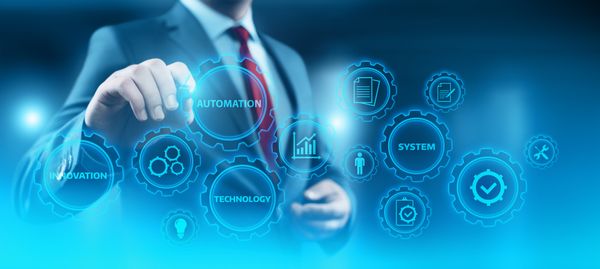Detailed Insights on Edge AI in 2024
The rapid expansion of mobile computing and Internet of Things (IoT) applications has resulted in the connection of billions of mobile and IoT devices to the Internet. This has led to the generation of vast quantities of data at the network edge. Hence, the accumulation of substantial amounts of data in cloud data centers leads to exceedingly high latency and network bandwidth utilization.
As a result, there is an urgent need to push the limits of artificial intelligence (AI) to the network edge in order to fully realize the promise of big data. Edge AI is a combination of edge computing and AI, and it is a critical idea for cutting-edge AI applications.
In this blog, we'll delve into the intricacies of Edge AI platform, what is Edge AI, Edge AI applications, advantages, challenges, and the promising future it holds.
What exactly is Edge AI?
Edge AI, short for Edge Artificial Intelligence, refers to the deployment of artificial intelligence algorithms directly on edge devices, rather than relying on a centralized cloud server. In simpler terms, it brings AI capabilities to the devices that collect and generate data, enabling real-time processing without the need for constant internet connectivity.
Why Edge AI?
Traditional AI models often rely on cloud servers, leading to delays in data processing and potential privacy concerns. Edge AI addresses these issues by processing data locally on the device, ensuring faster response times and minimizing the risk of sensitive information exposure.
EdgeCortix predicts that the Edge AI world will be full of opportunities in 2024, with new hardware and software innovations that will merge and change industries and open up fresh frontiers at the cutting edge of AI.
How does Edge AI work?
Edge AI leverages the capabilities of edge devices, such as smartphones, IoT devices, and edge servers, to perform tasks that typically require cloud-based AI processing. The key components include on-device AI models, AI edge computing resources, and sensors that generate real-time data. By integrating these elements, Edge AI enables devices to make intelligent decisions locally without the need for constant communication with a centralized server.
Pros of Edge AI
Real-time processing of data
One of the primary advantages of Edge AI is its ability to process data in real-time. By eliminating the need for data to travel to a centralized server and back, Edge AI significantly reduces latency, making it ideal for applications where immediate responses are crucial, such as autonomous vehicles, robotics, and healthcare monitoring devices.
Better privacy
Privacy concerns have become paramount in the era of digital transformation. Edge AI addresses this by processing data locally, minimizing the need to send sensitive information to external servers.
This ensures that personal data remains on the device, enhancing user privacy and meeting regulatory requirements.
Lower internet bandwidth
Edge AI contributes to more efficient use of internet bandwidth by processing data locally. This is especially beneficial in scenarios where bandwidth is limited or expensive.
By reducing the amount of data transmitted to the cloud, Edge AI helps optimize network resources and lowers operational costs.
Lesser power consumption
Edge devices often have limited battery life, and constant communication with a cloud server can drain power quickly. Edge AI mitigates this issue by performing computations locally, reducing the need for continuous data transmission.
This not only prolongs the battery life of devices but also aligns with the growing demand for energy-efficient technologies.
More responsiveness
The responsiveness of Edge AI is a game-changer in applications that require immediate decision-making. For example, in the healthcare sector, a wearable device equipped with Edge AI can quickly analyze vital signs and alert medical professionals in real-time, potentially saving lives.
Emerging Edge AI Applications
Manufacturing
In the manufacturing industry, Edge AI is revolutionizing processes by enabling predictive maintenance, quality control, and production optimization. Edge devices equipped with AI algorithms can analyze data from sensors on the factory floor in real-time, identifying anomalies and predicting equipment failures before they occur.
Retail
Retailers are leveraging Edge AI to enhance customer experiences and streamline operations. Smart shelves equipped with cameras and sensors use Edge AI to monitor inventory levels, detect out-of-stock items, and provide personalized product recommendations to shoppers. This not only improves efficiency but also enhances customer satisfaction.
Smart Hospitals
Edge AI plays a crucial role in transforming healthcare delivery, especially in smart hospitals. From real-time monitoring of patients vital signs to optimizing resource allocation and predicting equipment failures, Edge AI applications in healthcare contribute to improved patient outcomes and operational efficiency.
Drones
The use of drones has expanded beyond recreational and military purposes, with Edge AI enabling autonomous decision-making in real-time. Drones equipped with Edge AI platform can navigate complex environments, avoid obstacles, and perform tasks such as surveillance, search and rescue, and agricultural monitoring with increased precision.
Traffic
Edge AI is making cities smarter by optimizing traffic management. Intelligent traffic lights, equipped with Edge AI capabilities, can adapt in real-time to changing traffic conditions, reducing congestion and improving overall traffic flow.
This not only enhances the commuting experience but also contributes to environmental sustainability.
Energy
The energy sector benefits from Edge AI through predictive maintenance of infrastructure, optimizing energy consumption, and improving grid reliability. Edge devices with AI algorithms can analyze data from sensors in power plants and distribution networks, identifying potential issues and enabling proactive maintenance to prevent downtime.
Future of Edge AI
As we look ahead, the future of Edge AI appears promising, with continued advancements and widespread adoption across various industries. The integration of 5G technology will further enhance the capabilities of Edge AI, enabling faster data transfer and increased connectivity.
Additionally, advancements in edge computing hardware and AI algorithms will contribute to more sophisticated and efficient Edge AI applications. The growth of Edge AI is also expected to lead to the development of edge-native AI models, specifically designed to run efficiently on edge devices with limited resources.
This shift towards edge-native models will further optimize performance and address the challenges associated with deploying complex AI algorithms on devices with constrained computing power.
Challenges adopting Edge AI
Lack of hardware standards
One of the challenges hindering the widespread adoption of Edge AI is the lack of standardized hardware. Different edge devices come with varying computing capabilities, making it challenging for developers to create universally compatible Edge AI applications.
The establishment of industry-wide hardware standards is crucial to ensuring seamless integration and scalability of Edge AI solutions.
Multiple element integration
Edge AI applications often require the integration of multiple elements, including sensors, edge devices, and cloud services. Coordinating these elements to work seamlessly together poses a challenge, especially when dealing with heterogeneous hardware and software environments.
Simplifying the integration process will be essential for the smooth deployment of Edge AI solutions across diverse use cases.
Limited expertise
The expertise required for developing and deploying Edge AI applications is still in relatively short supply. Edge AI demands a unique skill set that combines knowledge of AI algorithms, edge computing architecture, and domain-specific applications.
Bridging this skills gap through education, training, and collaboration will be crucial for unlocking the full potential of Edge AI.
Conclusion
Edge AI represents a transformative shift in the world of artificial intelligence, bringing intelligence closer to where it's needed the most – at the edge. The numerous advantages, including real-time processing, enhanced privacy, lower bandwidth requirements, reduced power consumption, and increased responsiveness, make Edge AI a compelling choice for a wide range of applications.
With advanced technology and a skilled team, Logicwind provides customized solutions to meet specific business requirements. We offer top-notch AI services for businesses to help them stay ahead of the curve and redefine what’s possible at the edge.
Get in touch with us today!
FAQs
Q. What is the difference between AI and edge AI?
A. AI, or artificial intelligence, refers to the broader concept of machines or software systems mimicking human intelligence to perform tasks. Edge AI, on the other hand, specifically involves deploying AI algorithms directly on edge devices for real-time processing, eliminating the need for constant communication with a centralized server.
Q. What is AI edge learning?
A. AI edge learning, often referred to as edge machine learning, involves training machine learning models directly on edge devices. This approach enables edge devices to learn and adapt to local data without relying on a centralized training server. Edge learning contributes to improved autonomy and adaptability in AI applications.
Q. Who uses edge AI?
A. Edge AI finds applications across various industries, including manufacturing, retail, healthcare, drones, traffic management, and energy. Businesses, researchers, and developers leverage edge AI to enhance efficiency, reduce latency, improve privacy, and enable real-time decision-making in diverse scenarios.
Q. What is the scope of edge AI?
A. The scope of Edge AI is vast and continues to expand as technology advances. It encompasses a wide range of applications, from predictive maintenance in manufacturing to personalized customer experiences in retail. The increasing integration of Edge AI in different sectors indicates a growing scope for innovation and transformative solutions.
Q. Is edge AI the future?
A. Absolutely. The trajectory of technological evolution points towards an increasingly decentralized approach, and Edge AI aligns perfectly with this trend. As we overcome current challenges and witness advancements in hardware, algorithms, and connectivity, Edge AI is poised to play a pivotal role in shaping the future of artificial intelligence.




